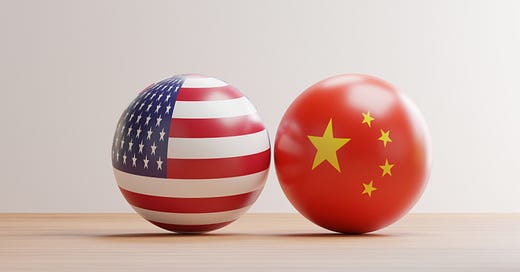The Economic and Political Fallout of New Tariffs: What’s at Stake?
The recent announcement by White House Press Secretary Karoline Leavitt regarding new tariffs—25% on imports from Canada and Mexico and 10%on imports from China—marks a significant shift in U.S. trade policy. These measures, set to take effect today, February 1st, aim to bolster domestic manufacturing and address concerns over illegal immigration and drug smuggling.
Economic Implications of the New Tariffs
Tariffs function as taxes on imported goods, with the costs typically borne by American importers and, ultimately, consumers through higher prices. The proposed tariffs are expected to have substantial economic impacts:
Consumer Costs – Higher tariffs can lead to increased prices for imported goods, affecting everyday items and potentially reducing consumer spending.
Corporate Impact – Companies reliant on imported materials may face higher production costs, which could compress profit margins or be passed on to consumers.
Market Reactions – Financial markets often respond negatively to tariff announcements due to anticipated disruptions in trade and increased costs for businesses.
Following the announcement, major stock indices experienced declines:
SPDR S&P 500 ETF Trust (SPY) – Closed at $601.82, down 0.5%.
SPDR Dow Jones Industrial Average ETF (DIA) – Closed at $445.39, down 0.78%.
Invesco QQQ Trust Series 1 (QQQ) – Closed at $522.29, down 0.15%.
These movements reflect investor concerns about the potential economic slowdown resulting from increased trade barriers.
Historical Context and Economic Outcomes
Historically, the U.S. has employed tariffs as a tool for protecting domestic industries. However, such measures have often led to unintended economic consequences:
The Smoot-Hawley Tariff Act of 1930 – Implemented to protect U.S. industries during the Great Depression, it led to retaliatory tariffs from other countries, a significant reduction in international trade, and is believed to have exacerbated the economic downturn.
Recent Tariffs Under the Trump Administration – Studies indicate that tariffs imposed during this period did not result in significant job growth in targeted industries. Instead, retaliatory tariffs adversely affected U.S. exports and jobs, particularly in agriculture.
Impact on Companies and Stock Prices
Tariffs can have mixed effects on companies:
Negative Impacts – Companies that rely on imported goods or materials may face increased costs, leading to reduced profit margins or higher prices for consumers. This can result in decreased sales and lower stock valuations.
Positive Impacts – Domestic companies that compete with imported goods may benefit from reduced competition, potentially leading to increased market share and revenues.
Overall, the uncertainty and potential for retaliatory measures can lead to increased market volatility and investor caution.
Political Ramifications
The political impact of tariffs is complex:
Support for the Party in Power – Tariffs can bolster political support in regions and industries that perceive benefits from protectionist measures.
Opposition and Criticism – Conversely, industries adversely affected by tariffs, such as those reliant on exports facing retaliatory tariffs, may oppose such policies.
Historically, tariff policies have been highly partisan, with debates often centered around the balance between protecting domestic industries and promoting free trade. The impact on the upcoming midterm election cycle could be significant, depending on whether the economic effects are perceived as beneficial or harmful by key voter demographics.
Effect on Gross Domestic Product (GDP)
The overall impact of tariffs on GDP depends on various factors, including the scale of the tariffs and the responses from trade partners:
Short-Term Effects – Tariffs can lead to higher production costs and consumer prices, potentially reducing consumption and investment.
Long-Term Effects – While some argue that tariffs can protect nascent industries and lead to long-term economic benefits, others contend that they can hinder economic growth by reducing trade efficiency and provoking retaliatory measures.
Economic analyses suggest that the proposed tariffs could reduce long-run economic output by approximately 0.4%, assuming no foreign retaliation. If other countries respond with their own tariffs, the impact could be more severe, affecting industries that rely on exports such as agriculture, automotive manufacturing, and technology.
Short-Term Pain for Long-Term Gain?
Proponents of tariffs argue that they are necessary for national security and economic independence. They believe that the short-term disruptions in trade and pricing will eventually lead to a more self-sufficient U.S. economy, with stronger domestic industries and reduced dependence on foreign supply chains.
However, history has shown that protectionist policies often result in unintended consequences, including retaliatory trade measures, economic inefficiencies, and increased costs for businesses and consumers. Whether the current administration's tariff strategy will achieve its intended goals or lead to greater economic difficulties remains to be seen.
Conclusion
The imposition of new tariffs on Canada, Mexico, and China represents a significant development in U.S. trade policy. While intended to protect domestic industries and address specific policy concerns, the economic and political ramifications are complex and multifaceted. Historical precedents caution against potential negative outcomes, including increased consumer costs, corporate profit pressures, market volatility, and broader economic slowdowns.
As these policies take effect, close monitoring and analysis will be essential to understand their full impact on the U.S. economy and its position within the global trade system. The coming months will determine whether these tariffs serve as a strategic advantage for American businesses or a costly miscalculation in trade policy.
Be sure to subscribe for free to the ProInvestor Insights newsletter at ProInvestorInsights.Substack.com. Also, don’t forget to subscribe to the CrossCheck Media YouTube channel for expert insights and in-depth analysis on Wall Street.
By: Todd M. Schoenberger, CEO of CrossCheck Media Inc.; CIO of CrossCheck Management LLC





